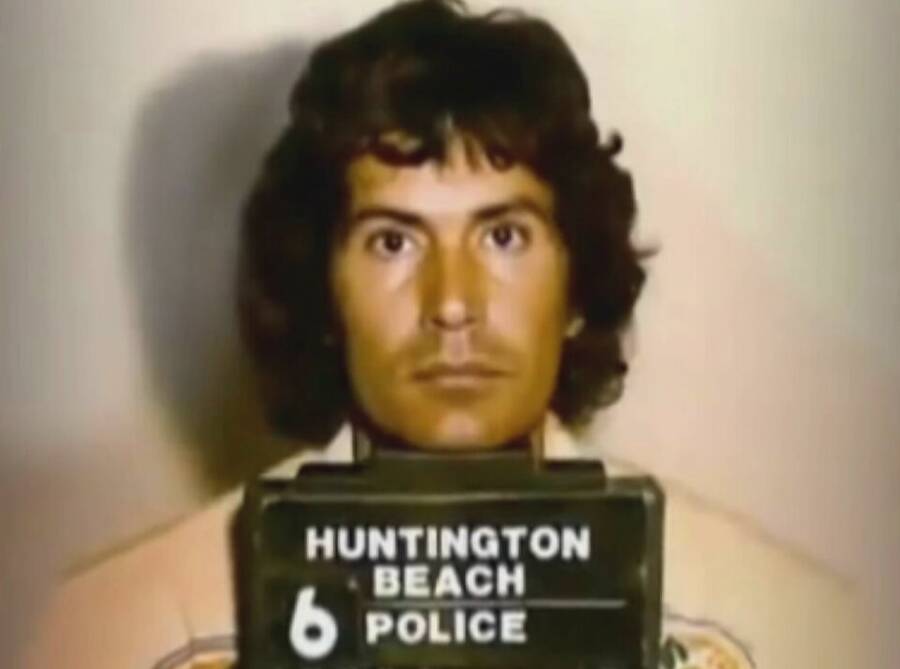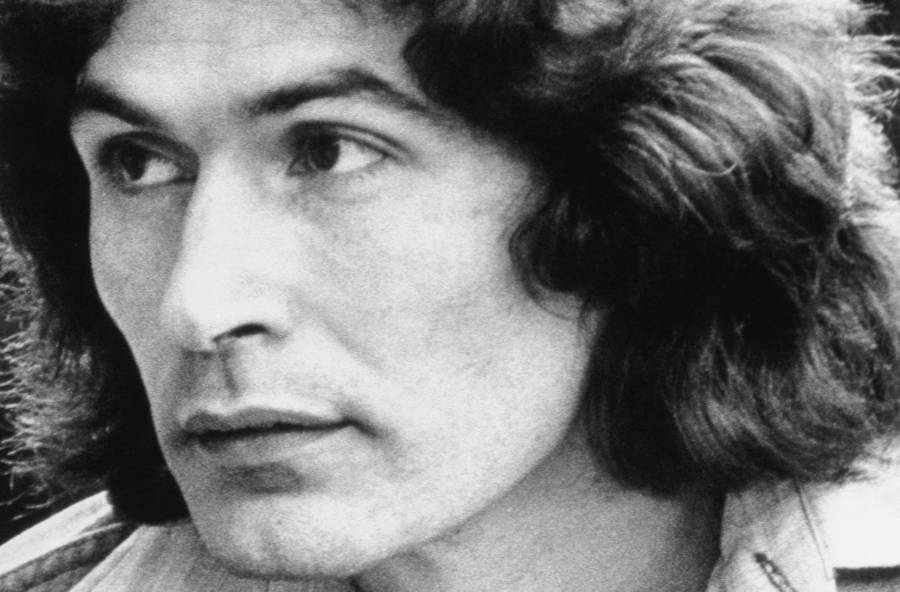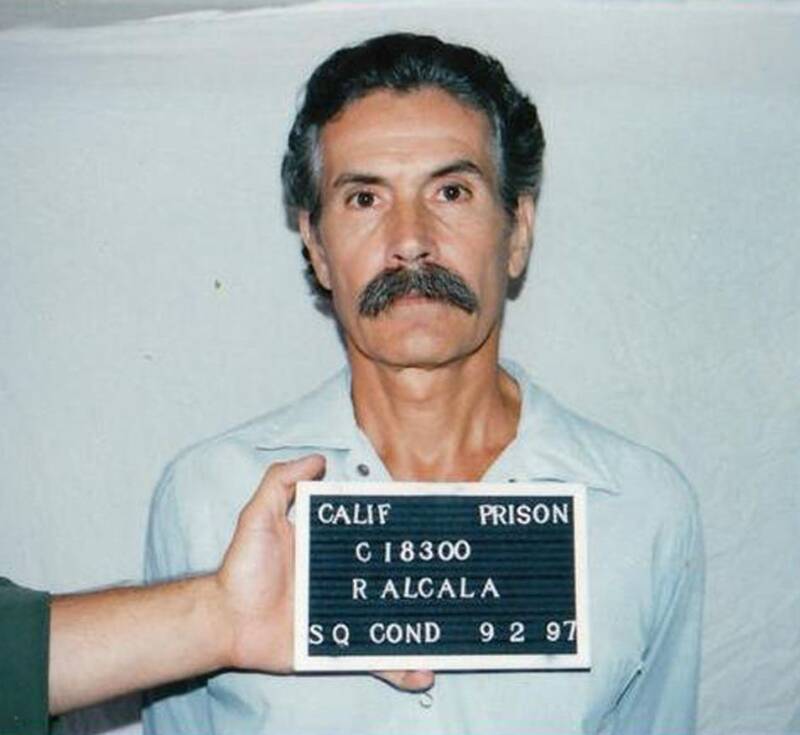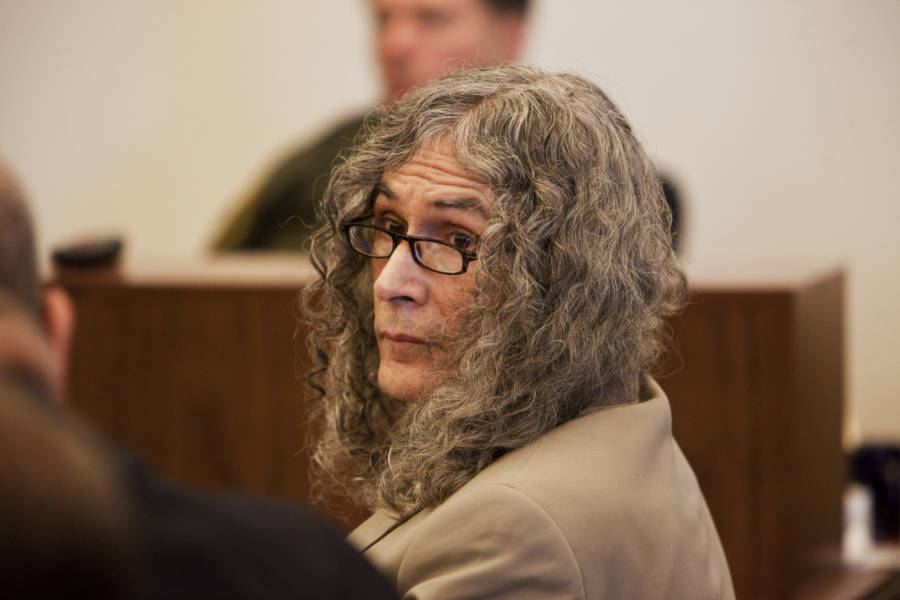Known as "The Dating Game Killer," Rodney Alcala murdered at least four people before his television appearance — and would kill again soon after.

YouTubeSerial killer Rodney Alcala during his infamous 1978 appearance on The Dating Game that took place in the middle of his string of grisly murders.
For most people, September 13, 1978 was an ordinary Wednesday. But for Cheryl Bradshaw, the bachelorette on the TV matchmaking show The Dating Game, that day was momentous. From a lineup of “eligible bachelors,” she chose handsome bachelor number one, Rodney Alcala.
But at that very moment, Rodney Alcala was keeping a deadly secret: he was a vicious murderer soon to be know as “The Dating Game Killer.”
If not for a healthy jolt of women’s intuition, Bradshaw would almost certainly be remembered today as one of Rodney Alcala’s victims. After the show ended, she conversed with Alcala backstage. He offered her a date she’d never forget, but Bradshaw got the feeling that her handsome potential suitor was a little off.
“I started to feel ill,” Bradshaw told the Sydney Telegraph in 2012. “He was acting really creepy. I turned down his offer. I didn’t want to see him again.”
Another one of the episode’s bachelors, actor Jed Mills, recalled to LA Weekly that “Rodney was kind of quiet. I remember him because I told my brother about this one guy who was kind of good-looking but kind of creepy. He was always looking down and not making eye contact.”
Had the popular dating show performed background checks on their bachelors, they would have discovered that Rodney Alcala, this “kind of good-looking but kind of creepy” guy, had already spent three years in prison for raping and beating an eight-year-old girl (he’d done the same to a 13-year-old too), which landed him on the FBI’s Ten Most Wanted Fugitives List.

Public DomainDuring his grisly string of murders that left at least eight dead, serial killer Rodney Alcala made a 1978 appearance on “The Dating Game” — and won.
But sometimes a background check can’t even uncover the whole story. In Rodney Alcala’s case, the whole story consisted of at least four prior murders that he hadn’t been definitively linked to yet.
As you can probably imagine, Cheryl Bradshaw‘s rejection likely only fueled Alcala’s fire. In total, before and after his television appearance, the sadistic “Dating Game Killer” claimed that he killed between 50 and 100 people.
This is the chilling story of Rodney Alcala, “The Dating Game Killer.”
The Disturbing Murders Of Rodney Alcala

Bettmann/Contributor/Getty ImagesRodney Alcala, “The Dating Game Killer.” 1980.
Rodney Alcala was born in San Antonio, Texas in 1943. His father moved the family to Mexico when Alcala was eight years old, only to abandoned them there three years later. His mother then moved Alcala and his sister to suburban Los Angeles.
At age 17, Alcala entered the Army as a clerk, but after a nervous breakdown, he was medically discharged due to mental health issues. Then, the intelligent young man with an IQ of 135 went on to attend UCLA. But he wouldn’t stay on the straight and narrow for long.
Like many serial killers, Rodney Alcala had a style.
His signatures were beating, biting, raping, and strangling (often choking victims until the point of unconsciousness, then once they came to, he’d start the process over again). On his first known attempt at killing, he was successful at only two of these things. The victim was Tali Shapiro, an eight-year-old girl he lured into his Hollywood apartment in 1968.
Shapiro barely survived her rape and beating; her life saved by a passerby who’d reported a tip to police on a possible abduction. Alcala fled his apartment when the police arrived and remained a fugitive for years afterward. He moved to New York and used the alias John Berger to enroll in film school at New York University where, ironically enough, he studied under Roman Polanski.
After being recognized thanks to an FBI poster, Alcala was finally identified as the perpetrator in the rape and attempted murder of Tali Shapiro. He was arrested in 1971 but only sent to prison on charges of assault (Shapiro’s family kept her from testifying, making a rape conviction unattainable). After spending three years behind bars, he soon spent another two years in prison for assaulting a 13-year-old girl.
Then, authorities regrettably let Alcala travel to New York to “visit relatives.” Investigators now believe that within seven days of his arrival there, he killed a college student named Elaine Hover who was the daughter of a popular Hollywood nightclub owner and goddaughter of both Sammy Davis Jr. and Dean Martin.
Soon after all of this, Alcala somehow got a job at the Los Angeles Times as a typesetter in 1978, under his real name, which was now attached to a substantial criminal record. A typist by day, by night he lured in young girls to be part of his professional photography portfolio — some of them never to be heard from again.
Now go back and listen to Rodney Alcala tell bachelorette Bradshaw, “The best time is at night.” Absolutely chilling stuff.
How The Dating Game Killer Was Finally Caught
The year after the Dating Game appearance, 17-year-old Liane Leedom was lucky enough to walk away unscathed from a photoshoot with Rodney Alcala, and she remarked how he “showed her his portfolio, which in addition to shots of women included spread after spread of [naked] teenage boys.”

Public DomainKnown as “The Dating Game Killer” for his 1978 appearance on the popular game show, Rodney Alcala murdered at least eight victims between 1971 and 1979.
Police have since released parts of Alcala’s “portfolio” to the public to aid in victim identification (the photos are still available to view). Over the years, a few have stepped forward to reveal their horrifying moment with this predator.
The case that would finally break Rodney Alcala’s killing spree was that of 12-year-old Robin Samsoe. She’d disappeared from Huntington Beach, California on her way to ballet class on June 20, 1979.
Samsoe’s friends said that a stranger approached them on the beach and asked if they’d want to do a photoshoot. They declined and Samsoe left, borrowing a friend’s bike to hurriedly get to ballet. At some point between the beach and class, Samsoe disappeared. Nearly 12 days later, a park ranger found her animal-ravaged bones in a forested area near the Pasadena foothills of the Sierra Madre.
Upon questioning Samsoe’s friends, a police sketch artist drew up a composite and Alcala’s former parole officer recognized the face. Between the sketch, Alcala’s criminal past, and the discovery of Samsoe’s earrings in Alcala’s Seattle storage locker, police felt confident that they had their man.
But beginning with the trial in 1980, Samsoe’s family would have to follow a rather long and winding road to justice.
The jury found Alcala guilty of first-degree murder and he received the death penalty. However, the California Supreme court overturned this verdict due to the jury being prejudiced, they felt, by learning of Alcala’s past sex crimes. It took six years to put him back on trial.

Ted Soqui/Corbis via Getty ImagesImages of Rodney Alcala’s victims (including Robin Samsoe, bottom right) are projected during his 2010 trial in Santa Ana, California. March 2, 2010.
At the second trial in 1986, another jury sentenced him to death. This one didn’t stick either; a Ninth Circuit Court of Appeals panel overturned it in 2001, LA Weekly wrote, “in part because the second trial judge did not allow a witness to back up the defense’s claim that the park ranger who found Robin Samsoe’s animal-ravaged body in the mountains had been hypnotized by police investigators.”
Finally, in 2010, 31 years after the murder, a third trial was held. Just before the trial, Orange County Senior Deputy District Attorney Matt Murphy told LA Weekly, “The ’70s in California was insane as far as treatment of sexual predators. Rodney Alcala is a poster boy for this. It is a total comedy of outrageous stupidity.”
It is indeed true that Rodney Alcala was one of a great many California serial killers who ran rampant in the mid-to-late 20th century.
Rodney Alcala’s Long Road Toward Facing Justice
During the years he spent incarcerated, Rodney Alcala self-published a book called You, the Jury in which he proclaimed his innocence in the Samsoe case. He hotly contested the DNA swabs done on prisoners periodically for the police department’s evidence bank. Alcala also brought two lawsuits against the California penal system; one for a slip and fall accident, and another for the prison’s refusal to provide him with a low-fat menu.
Alcala announced to much surprise that he would be his own lawyer in his third trial. Even though now, 31 years after Samsoe’s murder, investigators also had concrete evidence against him on four different murders from decades past — thanks to the prison’s DNA swabs. The prosecution was able to combine these new murder charges along with Robin Samsoe in the 2010 trial.

Ted Soqui/Corbis via Getty ImagesRodney Alcala sits in court during his 2010 trial in Santa Ana, California. March 2, 2010.
During the 2010 trial, the jurors were in for a bizarre ride. Rodney Alcala, acting as his own attorney, asked himself questions (referring to himself as “Mr. Alcala”) in a deep voice, which he would then answer.
The peculiar question and answer session continued for five hours. He told the jury that he was at Knott’s Berry Farm at the time of Samsoe’s murder, played dumb on the other charges, and used an Arlo Guthrie song as part of his closing argument.
Rodney Alcala simply stated that he didn’t remember killing the other women. The only other witness for the defense, psychologist Richard Rappaport, offered the explanation that Alcala’s “memory lapse” could be equated to his borderline personality disorder. The jury, not surprisingly, found Alcala guilty of the four DNA-backed charges, and also found him guilty of killing Samsoe.
A surprise witness at his sentencing was Tali Shapiro, the girl that Alcala had raped and beaten within an inch of her life about 40 years before.
Shapiro was there to witness as justice for Robin Samsoe, 12; Jill Barcomb, 18; Georgia Wixted, 27; Charlotte Lamb, 31; and Jill Parenteau, 21, had finally been achieved. The court handed Alcala the death penalty again — for the third time.
Since that trial, investigators have continued to link the “Dating Game Killer” to many other cold case murders, including two to which he pled guilty in New York in 2013. The full extent of his crimes may never be known.
The Death Of The Dating Game Killer
While still sitting on death row in California, Rodney Alcala died of natural causes at age 77 on July 24, 2021.
Immediately, some of his victims spoke up, expressing their relief that the “Dating Game Killer” was finally, truly gone. “The planet is a better place without him, that’s for sure,” said Tali Shapiro. “It’s a long time coming, but he’s got his karma.”
Investigator Jeff Sheaman, who had been working on a cold case involving Alcala in Wyoming in recent years, was even more blunt, saying, “He’s where he needs to be, and I’m sure that’s in hell.”
Sheaman recalled that, during interviews with police, Alcala would trace his finger along the faces of his victims in the photographs put before him, perhaps in hopes that it would irritate and even enrage the detectives. Throughout his investigation, Sheaman was overcome with just how cold Alcala was and ultimately came to believe that he may have taken untold scores of victims that we’ll never know about.
“Hell, there might be a ton of other victims out there,” Sheaman said after Rodney Alcala’s death. “I have no idea.”
After this look at Rodney Alcala, the “Dating Game Killer”, check out serial killer quotes that will chill you to the bone. Then, discover some of modern history’s most prolific serial killers. Finally, meet Ed Kemper, the killer whose crimes will keep you up at night.





